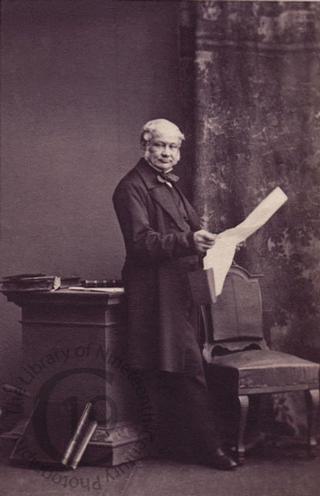
Admiral Sir Edward Belcher
A carte-de-visite portrait of the British naval officer, scientist, and explorer Sir Edward Belcher (1799-1877).
Born in Nova Scotia in 1799, he entered the Navy as a midshipman in 1812, at the age of thirteen. In 1825 he accompanied Frederick William Beechey's expedition to the Pacific and Bering Straits as a surveyor. He subsequently commanded a surveying ship on the north and west coasts of Africa and in the British seas, and in 1836 on board the Sulphur he took up the work which Beechey had left unfinished on the Pacific coast of South America. Belcher made various observations at a number of islands he visited, but was delayed by being despatched to take part in the war in China of 1840-1841, only reaching home in 1842. In 1843 he was knighted, and undertook surveying work in the East Indies and the Philippines on board the Samarang until 1847. In 1852 Belcher was given command of the government Arctic expedition in search of Sir John Franklin, missing since 1845. The mission was unsuccessful. Belcher's inability to render himself popular with his subordinates was particularly unfortunate in an Arctic expedition, and he was not wholly suited to command a vessel in ice. This was his last active service, but he was appointed a KCB in 1867 and an admiral in 1872. He died in London on 18 March 1877 at the age of seventy-eight.
His published works included a Treatise on Nautical Surveying (1835), a Narrative of a Voyage around the World performed in H.M.S. Sulphur 1836-1842 (1848), and The Last of the Arctic Voyages (1855). His other works included a three-volume novel, Horatio Howard Brenton (1856), a story about a midshipman who rises to the rank of captain.
Several places in the world are named for him, including Belcher Point in Alaska, the Belcher Islands in Hudson Bay, and the Belcher Channel in the Arctic.
Photographed by Camille Silvy of London on 22 March 1861.
Code: 124523




